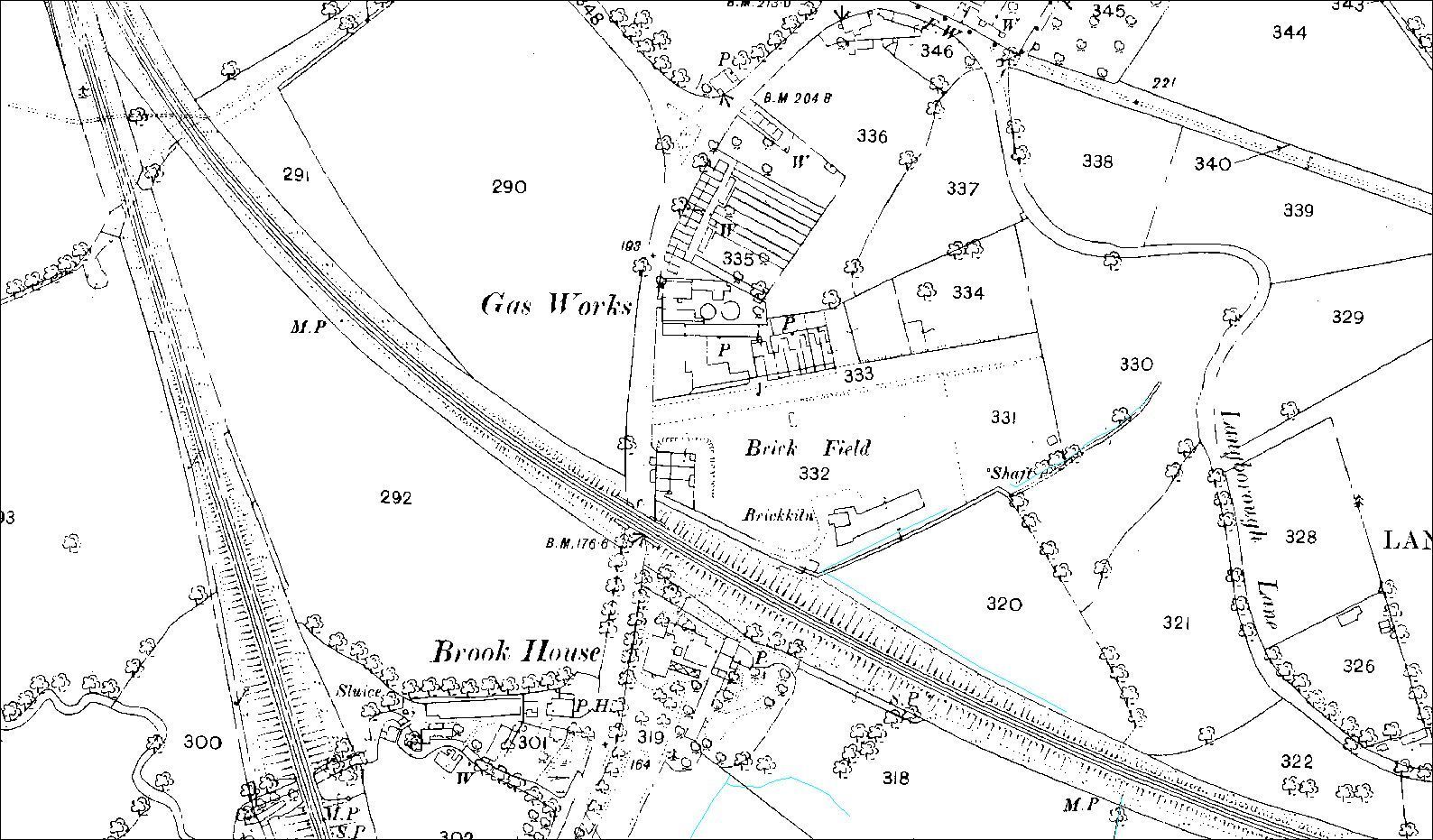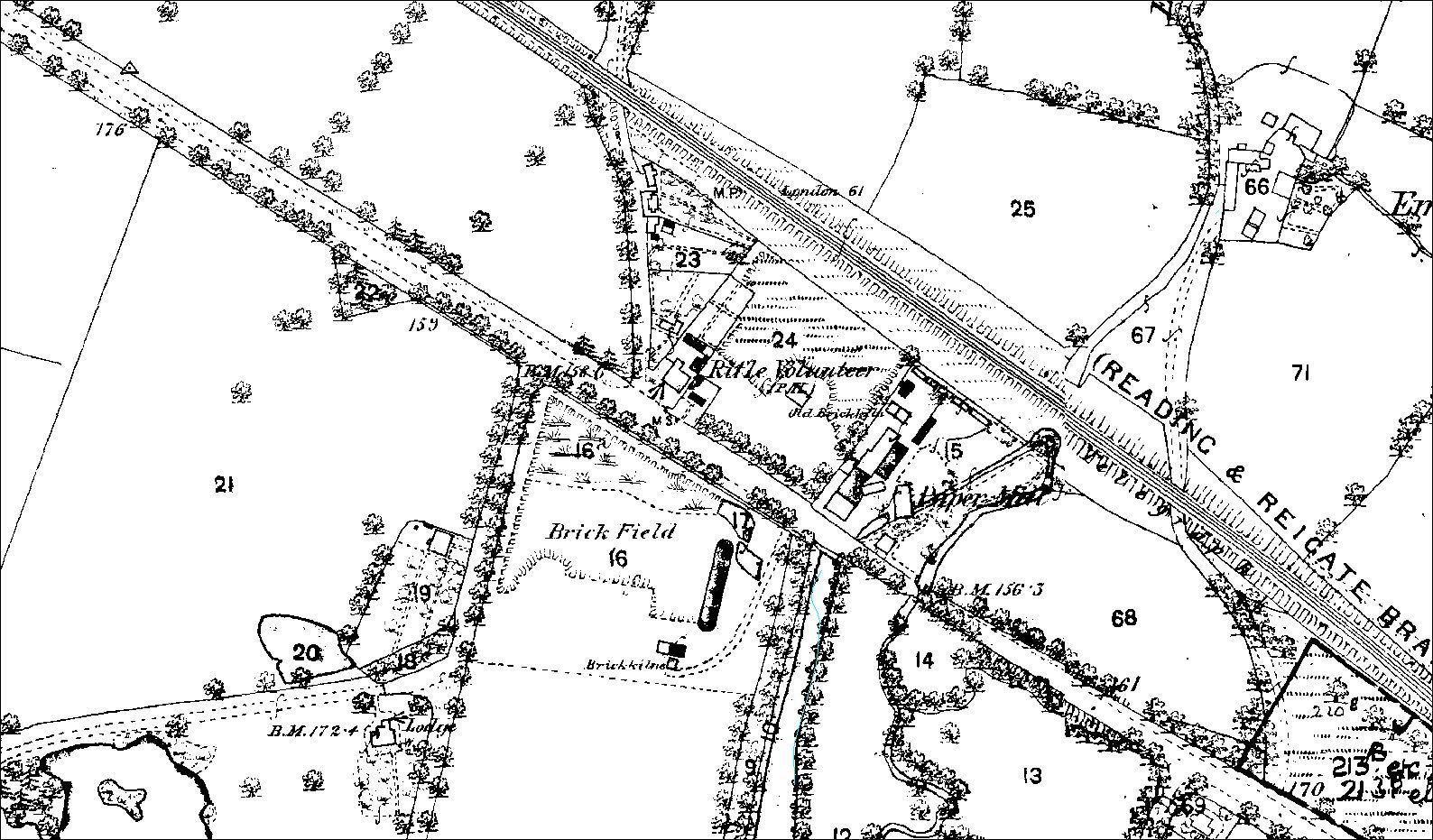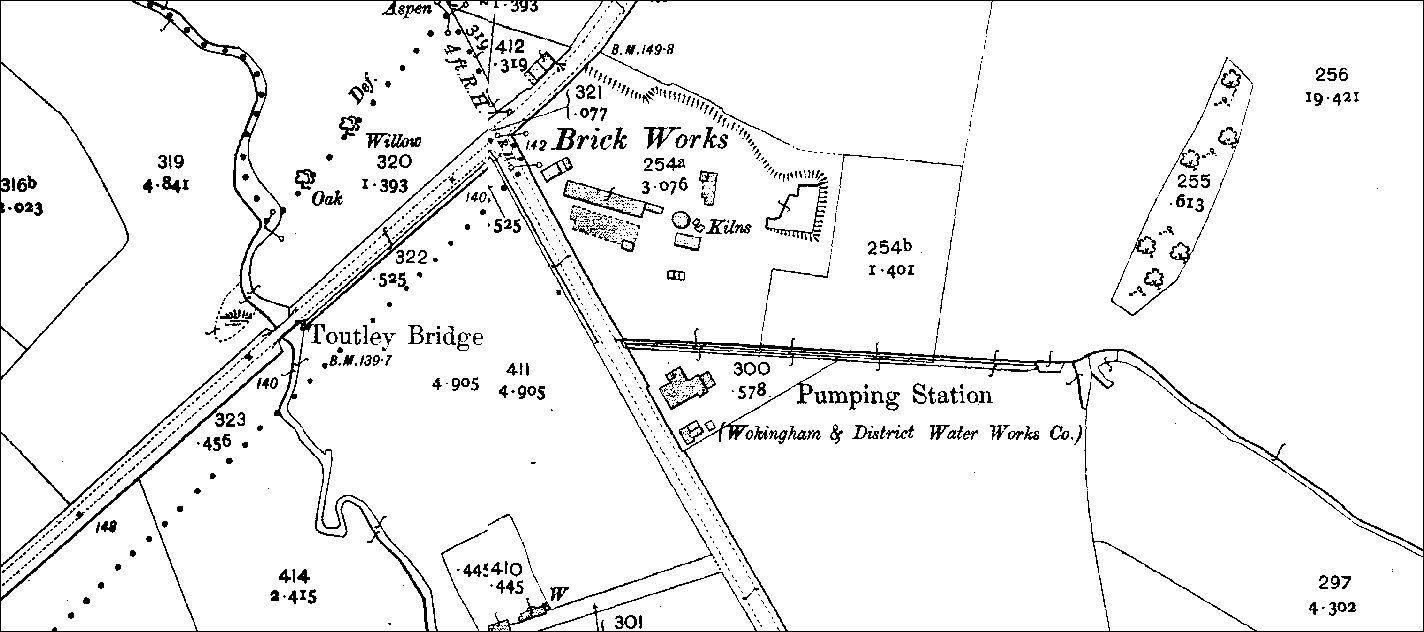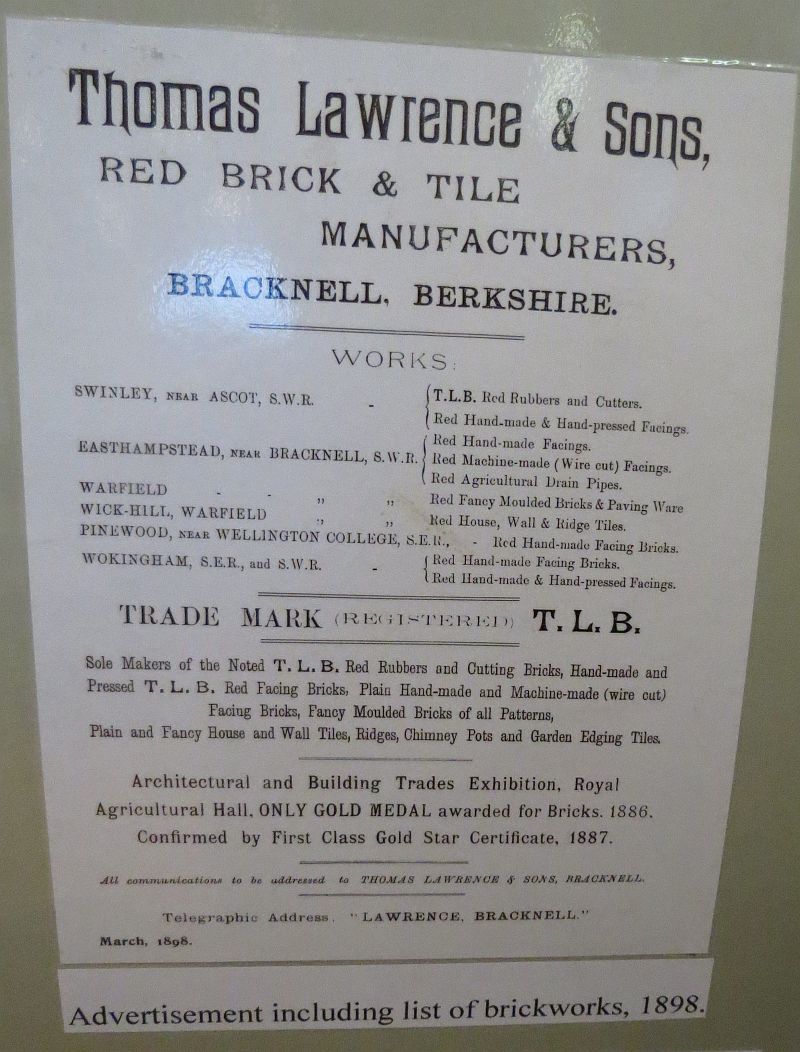
Emmbrook Brickworks
Carey Road, Wokingham
 In Carey Road there was a brickfield and kilns in 1870 but they appear to have gone by 1896. Where the brick pits were is now the site of the Wokingham Town Council allotments accessible from Gipsy Lane. This extract is from the 1871 map. The only information relating to owners is from the 1874 Websters Reading Directory, which has the following entry:
Benfell A.D, brick, tile and pipe manufacturer, Carey Place
In Carey Road there was a brickfield and kilns in 1870 but they appear to have gone by 1896. Where the brick pits were is now the site of the Wokingham Town Council allotments accessible from Gipsy Lane. This extract is from the 1871 map. The only information relating to owners is from the 1874 Websters Reading Directory, which has the following entry:
Benfell A.D, brick, tile and pipe manufacturer, Carey Place
Oxford Road, Wokingham
 In Oxford road nearly opposite the station there were brickworks in 1870 and 1898, but they appear to have gone by 1910. Thomas Marley Westcott was making bricks here in 1877 and gave the railway station as his address in 1883. This map is from 1871 and shows the brick field.
They are currently under properties in Fredrick Place.
In Oxford road nearly opposite the station there were brickworks in 1870 and 1898, but they appear to have gone by 1910. Thomas Marley Westcott was making bricks here in 1877 and gave the railway station as his address in 1883. This map is from 1871 and shows the brick field.
They are currently under properties in Fredrick Place.
Reading Road, Emmbrook
 At Emmbrook, opposite the Rifle Volunteer there was a brickfield and kilns in 1870. They were however gone by 1898. This extract showing its location is from an 1872 map. It is on the site currently occupied by the Shell garage.
At Emmbrook, opposite the Rifle Volunteer there was a brickfield and kilns in 1870. They were however gone by 1898. This extract showing its location is from an 1872 map. It is on the site currently occupied by the Shell garage.
Toutley Road, Emmbrook
 Brickworks were at the junction of Toutley Road and Forest Road in 1898. Edmund W Collis and Company made bricks and tiles here in 1907 and 1915. William Charles James Hissey had taken over by 1920 and was still there in 1931.William Davis was there in 1935. Toutley Brick Works Ltd succeeded, founded in 1936 by the proprietors of Gough’s Lane Brick Works Ltd( Warfield) with Thomas Lawrence &Sons holding 50% of the capital. The works were requisitioned in 1940 for the Static Condenser Company to which they were sold by Lawrence’s after the war.
Brickworks were at the junction of Toutley Road and Forest Road in 1898. Edmund W Collis and Company made bricks and tiles here in 1907 and 1915. William Charles James Hissey had taken over by 1920 and was still there in 1931.William Davis was there in 1935. Toutley Brick Works Ltd succeeded, founded in 1936 by the proprietors of Gough’s Lane Brick Works Ltd( Warfield) with Thomas Lawrence &Sons holding 50% of the capital. The works were requisitioned in 1940 for the Static Condenser Company to which they were sold by Lawrence’s after the war.
Molly Millars Lane, Wokingham
The site west of Molly Millars Lane became Thomas Lawrence’s New Yard between 1893 and 1899. Thomas Lawrence was born in 1824 and died in 1901. He was a local entrepenuur. His original business was as a Draper in Binfield. By 1893 he not only had thriving brickworks at Swinley, Warfield and Easthampstead in Bracknell , Pinewood in Crowthorne and Wokingham but also dominated the local retail scene with a vast department store in Bracknell High Street. His Wokingham Brickworks had a tramway that crossed Molly Millars Lane and the Emm Brook to connect it to the railway some half a mile away.
By 1910 the works ultimately covering 58 acres had spread to East Heath where the Blue Pool had been started. The 60 foot deep pit was filled in the 1970’s. This was Lawrence’s biggest yard, production reaching 10 million bricks per year. Hand made bricks were marked T.L.B. and machine made pressed bricks were being marked *WK * by 1933. This brick was found in the garden of 20 Brookside, on the former site of Emmbrook House.
 There were ten cottages for employees on the site . The two Hoffmann kilns, of 26 and 28 chambers each holding 30-35,000 bricks, had chimneys some 180 and 220 feet high, and by 1931 there were also two circular kilns. During the Second World war production ceased and one of the chimneys fell and severely damaged its kiln. The other kiln was used after the war, as well as three beehive kilns, to produce wirecuts and a few hand made bricks, but the works were closed after a flood caused extensive damage in 1960. Thomas Lawrence and Sons gave the address as Fishponds (1911-1935), Eastheath Brickworks (1931-1948) and Molly Millars Lane (1957). Thomas Lawrence’s bricks have been used in the building of the Albert Hall, Westminster Cathedral and in restoration work at 10 Downing Street and Hampton Court Palace.
There were ten cottages for employees on the site . The two Hoffmann kilns, of 26 and 28 chambers each holding 30-35,000 bricks, had chimneys some 180 and 220 feet high, and by 1931 there were also two circular kilns. During the Second World war production ceased and one of the chimneys fell and severely damaged its kiln. The other kiln was used after the war, as well as three beehive kilns, to produce wirecuts and a few hand made bricks, but the works were closed after a flood caused extensive damage in 1960. Thomas Lawrence and Sons gave the address as Fishponds (1911-1935), Eastheath Brickworks (1931-1948) and Molly Millars Lane (1957). Thomas Lawrence’s bricks have been used in the building of the Albert Hall, Westminster Cathedral and in restoration work at 10 Downing Street and Hampton Court Palace.